



































It’samazing just how much delicious veg you cangrowin even the smallestofspaces I’ve grown mine in anything from afull-sized allotment to a little garden patchbut always manage to have something to harvest fresh or to pickfrom the freezer or larder shelf.
The key is to keep sowing so, for example, when that batch of lettuces is ready to eat another is coming along to replace it, or when awinter crop finishes asummer one is waiting in the wings to take its place.




In this issue we haveplenty of ideas and advicetokeep your patch, whatever itssize, as full and productive as possible. KG regular Ben Vanheems looksatinventive waystopackinthe harvests,while starting on page 69 inter net sensation Huw Richards looks at suitable crops to grow in mixed pots but which still pack apunch visually,even wherespaceislimited.
We have growing guides from our expertsonmangetout and sugarsnap peas,courgettes, parsley and tangy currants, as well as some great adviceonsupercharging your compostusing nature’s own recycling experts, wor ms. And weeds canbeabit of anuisance at this time of year but if youtur ntopage 54 Anton Rosenfeld of Garden Organic explains how they can be veryuseful indicators, telling you agreat deal about your soil.



For thosewho would prefer to pull theweeds we look at some products to makegardening just alittlelesshardonthe knees, and on page 64 ecologist Becky Searle shares tips on building acontainer pond to attract wildlife and beneficial insects to your garden.
Finally,take atriptoPoland withustosee how our gardening friends thereenjoy their allotments, turning them, quiteliterally,intoa home from home!








12 ON THE PLOT WITH THE THREE MUDKETEERS
Join the team in their gardens as they make crop markers, give an updateontheir parsnips and harvest rhubarb and broccoli
29 TICKLE YOUR TASTEBUDS
Discover the bittersweet taste of chicory
30 RIGHT TOOL, RIGHT JOB
Martin Fish continueshis 'back tobasics' series with aguide to must-have tools
33 BEYOND THE PLOT… COURGETTES ✪
Seed guardian Rob Smith looksatdifferent ways of preserving your harvests
37 SMALL SPACE SAVIOURS ✪
Benedict Vanheems offers some great ideas for making the most of your growing space
42 ARISING STAR
We talk to Ellis Lewis, ayoung gardener passionate about horticultureand his new career
48 HIT THE HEIGHTS WITH SNOW PEAS ✪
Growing mangetout andsugar snap peas
50 SHARING POLISHPASSION FOR ALLOTMENTS ✪
Olga Grieves recalls her experiences of allotments in Poland


Delicious delights featuring courgettes, gooseberries and lettuce ✪ 92
54 WHATWEEDS CAN TELL YOU ABOUT YOUR SOIL ✪
Dr Anton RosenfeldofGarden Organic explains whatcertain weeds aresaying about your soil type
58 OPEN-POLLINATEDVSHYBRID SEEDS: WHICH IS RIGHT FOR YOUR GARDEN?
Natasha Lane from Unwins explains the difference between open-pollinated and hybrid seeds
61 THE WONDERS OF WORM COMPOSTING ✪
The best way to produce fantastic material to feed your plot using worm power is explained by Helen Hutchings-Cox
64 BUILD ACONTAINERPOND ✪
Becky Searle seeks professional helptobuild anew pond on her allotment
69 POLYCULTURE IN POTS ✪
In an extract from his new book Huw Richards explains how youcan recreate polycultureonasmall scale in containers
72 HERB OF THE MONTH
Aguidetogrowing one of the most popular herbs–parsley
75 WHAT’S CURRANT? ✪
This month our fruit expert David Patch takes alook at blackcurrants and all the various shades of redcurrants
Scan this,and we’lltellyou!

79 PRODUCTREVIEWS ✪
This monthwelook at products to make gardening more comfortable
82 YOUR FREESEEDS
Some growing tips for your free gifts of radish, spinach and spring onion
84 MONEY-SAVING OFFERS ✪
Claim 20% offcourgette, pea and parsley seeds and find specialoffers on growing bags, gloves and kneelers
86 GIVEAWAYS WORTH OVER £754 ✪
Win prizes from the UK's topsuppliers
87 GIVEAWAYCOUPON PLUS SEED SUPPLIERS
90 GARDEN STORE PLUS SUBSCRIBER SAVERS
Achance for KG subscribers to take advantage of some exclusiveoffers




Sow all varieties of Florence fennel after the summer solstice, when it is less likely to bolt. Either direct sow in the garden, or sow into modules beforeplanting out when about 10cm (4in) tall

Keep harvesting soft fruit, especiallybushes which arenot protected by afruit cage, to make surethat youget a harvest and it doesn’tall get eaten by birds
Keep grass paths and edges mown to reduce habitat for slugs and other pests next to the veg beds. The clippings areuseful for mulching potatoes or adding to the compost heap
The summer is abusy time, so remember to enjoy your plot. Place aseat in the garden whereyou can enjoy amorning or evening drink and appreciate your lovely garden
The kitchen garden is exploding with growth as we approachthe summer solstice on June 21, the longest day.Withsummer abundance in full swing, it is difficult remembering that this marks the beginning of daylight becoming alittle shorter every day.Itisnot atime to be disheartened! There’sstill plenty of summer to enjoy and lots of do in the plot. Around the summer solstice it’stime to stop harvesting rhubarb and asparagus to give these productive perennials time to recover their strength for next season.
Mulch them with some garden compost to help reduce weed growth, conserve moisture and feed them with an organic fertiliser to help ensurebumper cropsnext year Keep sowing so that thereare moreplants to put in as broadbeans, early potatoes and other early crops arecleared –and keep harvesting to enjoy all the gorgeous fresh summer veg.

STEP 1: Growing in apolyculture means growing different kinds of plants in the same space. This old-fashioned technique increasesbiodiversity andcan be seen in traditional gardening methods. Mixing plants up helps to reduce damage too, by confusing pests and also by attracting beneficial predators.
STEP 2: Plant out larger slow growing crops such as winter brassicas their usual distance apart. Next,interplant with faster growing catch crops including spinach, radish, Florence fennel,multi-sown spring onions, annual herbs and salad leaves. Makesurethat sun-loving veg is not placed close to tallplants.

STEP 3: Add flowers. Youcan choose edible flowers to add to summer salads, such as nasturtium, violaorcornflowers. As the plants grow they will help to shade the soil, reducing evaporation.
• Find out moreabout polyculturewith expert Huw Richards –see page 69
■ Garlic rust is afungal disease (Puccinia porri) whichisidentified by bright orange pustules on the foliage. Usually the infection is moreunsightly than harmful and the garlic will dry and storeasusual. To reduce the risk of garlic rust always grow garlic far enough apart toallow for adequate ventilation.

■ Cabbage white butterflies areprolific now.Protect brassicas with butterfly netting or fineinsect mesh suspended over cloche hoops which are taller than theheightofthe plants. This is important because the butterflies can layeggs on any leaves that aretouching the netting.
Overwintered garlic shouldbeready toharvest thismonth, depending on the variety.When the leaves turn yellow,a sign that the garlic is ready, carefully digupusing atrowel or fork, being surenot to cutinto the bulb. Enjoysome fresh and store the rest.
Remove rootswith aknife (itis much easier nowthan later on) and lay in asinglelayer in asunny place if possible, covered against the rain with acloche or placed inside a greenhouse or polytunnel. After a monththe leaves should be dry and rustle when moved and the garlic can be moved to acool dry place to be stored until needed.

Basil, beetroot, cabbage,calabrese, carrots, chard, chicory,coriander, courgettes, cucumber,dill, endive, Florence fennel, French beans, kale, kohl rabi, leeks, lettuce, peas, radish, radicchio, runner beans,salad leaves, spinach, summer squash,squash, swede, turnips, over-wintering brassicas


Sprouts, broccoli, cabbage,cauliflower, celeriac, chillies, courgettes, Frenchbeans, Florence fennel, leeks, peppers, runner beans, squash, sweetcorn,tomatoes
Asparagus, globe artichokes, beetroot, broad beans, broccoli, carrots,cauliflower, chard, Florence fennel, garlic, kohl rabi, lettuce, onion, peas, potatoes,radish, raspberries, rhubarb, salad leaves,spinach, spring onion, strawberries,turnips


STEP 1: Bolting can be caused by stress including hot weather and not enough water,orjust naturally coming to their flowering time. Removing the flowering shoots of some herbs such as basil will help to increase their cropping lifespan, but rather than composting make the most of thesegardening “freebies”.

STEP 2: Using edibleflowers and seeds in the kitchen saves alittle money and opens up awholenew world of flavours. Coriander flowers areedible but Ileave them to become green seeds. These are incredibly delicious, tasting likecitrusycoriander and something that youcannot buy in the shops. Bolting radish pods are spicy and delicious pickledtoo.

Radicchio andchicories areincreasing in popularity in the UK, prizedfor their delicious slightly bitterflavour,gorgeous colours and ability to withstand cool temperatures. Versatile hearting chicories canbeenjoyed roasted, chargrilled and baked, aswell as broken into leaves for salads. Loose leaf varieties aregreat for wintersaladsand cooking as aleafy green, and thereare also chicories bred for forcingand eating as
chicons.Chicories areanexcellent crop to plant out in July and August,after earlier crops have finished
Sow the chicory seedsinto trays in the greenhouse and prick out into modules once large enough to handle. Grow on until they areabout 10cm (4in) tall, then plantout 30cm (12in) apart. Protectfromslugs and snails while they aresmall. Plant later sowingsunder cover for late winter and early spring harvests.

STEP 3: It’sfrustrating when Florence fennel bolts rather thanforming atasty bulb. Let somegrowontoproduce flowers. Nibblethese, and herb fennel flowers too, to experiencethe burst of incredible sweet aniseed. Dried, the flowers areused as aspice known as the Spice of Angels. The seeds,leaves and stems arealsoedible.
■ Plant courgettes, summer and wintersquash outside. If theweather is very dry keep wateringuntil they areestablished. Mulch with some compost to conserve moisture, and feedthem too.
■ Plant modulesown celeriac 30cm (12in) apart in rows 45cm (18in) apart. Interplant with quickcatch crops including salad leaves and radish. Although they look like root veg, the part we eat is actually aswollen stem. Celeriac arethirsty plants, thriving in damp conditions, so keep them well watered in dry weather.Once the plants arelarger and no longer susceptible to slugs, amulch of grass clippings will help to keep the celeriac moist. Remove sideshoots to encourage large crops.
■ Put citrus trees whichhave overwintered under cover outside to enjoy the summer weather.Check whether they need potting on by lifting the pot and seeing whether the roots areappearing through the holes in the bottom. Always pot on to apot that is just alittle larger,rather than choosing amuch bigger container.Feed citrus regularly with acitrus liquid feed. Mulch the pots to prevent water evaporation.
■ Keep plants growing in the greenhouse or on polytunnel staging shaded during very sunny weather to prevent them from drying out or getting frazzled. Abed sheet suspended over them will work well,orchoose shade netting from agarden supplier








































“Gardening is the work of a lifetime: you never fnish”



















“Have you viewed us on YouTube yet?”














(Oscar de la Renta, Dominican fashion designer)





























Steve’seffortstobring homethe title in the KG Parsnip Grow Alonggot off toadodgy start.His first attempt to pre-chit in aTupperwarebox on damp kitchen towel refusedtogerminate in any numbers, so he ispinning his hopes on asecond sowingmade direct into compost in arecycled dustbin. These consist of ‘Tender &True’,plus home-savedseeds from plants that ran to seedonhis daughter’s allotment. Thelatter germinated strongly with the former bringing up therearand slowly catching up.

Tony has been on his hols and was hoping that his parsnip seeds would have sprung into life while he was away.Sadly,that was not the case. Not even alimp! Acouple sownon damp kitchen roll areshowing some signs of life and he ‘thinks’ theremay be acouple emerging from the ones he sowed direct –orare they just weed seedlings? Time will tell!


















Emma’sattempts at growing parsnips thisyearhave been fraught with failure. The ones direct sown did not germinateand the seeds on damp kitchen roll paper in ayoghurt pot took forever to show signs of life. When they didthey shotupsoquickly they were almost abit tooadvanced to move on without damaging them butthey havebeen moved outside now andsofar aresurviving.
and so far are surviving.




















































































The KG team offer chat, tips and gardening gossip






















The purplesprouting broccoliI sowed back in late summer and planted in the polytunnel in the autumn worked well and served several purposes. The first of course was that it was delicious to eat and cropped at atimewhen therewas little else, helping to fillthat infamous spring ‘hungry gap’. Just 20-25 plants produced more than enough for two and even gave us some to freeze. It also kept the soil in the polytunnel occupied in winter,ensuring it was watered regularlyand fed occasionally.After a good month to sixweeks of cropping it’sfinally time to pull it out forcomposting and to make way for my summer crop of tomatoes and peppers.
























Ihaven’tbought any labels this year.Instead, Icut up plastic milk bottles. Irinse them out and then remove the outer plastic sleeve, thatfortunately is easy to remove. Iamleft withalarge white or clearplastic bottle, depending on the make. Ithen cut out as much of the flat surface as possible in rectangular shapes and then angle the scissors andcut triangles out. As Icut they drop into the base of the bottle, whichacts as auseful storage trayoflabels to take to the potting area.


Ihave found triangular labels arebetter asyou havea large area towrite acrossatthe top and the pointed end slips into the side of the pot really well







Rhubarb –the vegetable that masqueradesasafruit –hastobea must-have on any veg patch. Last year,however, mine was very poor andthe harvest was minimal. This was because Ihad to move my plants the year before to anew spot and they needed time to recover.Needless to say,I’ve been looking after them with soil improvers and mulching and they have rewarded me with abumper crop this year. And now the kitchen calls…









Hi! I’m Belle and I’m hereevery month to sharelots of fun activities for you to do at home, on your own or withyour family






Ilovefinding newcolours and creatures in my garden and allotment space. I exploreupinthe sky,under logs and over leavesthroughout the seasons to see what plants, textures and crawly visitors Ican find.I’m always finding surprises! Ihave created alist of things to look out for which may help youget started.
Take this page and apencilout with you, so that youcan tick off whatyou find as youexplore.
■ Snail
First on my list: rhubarbcrumble of course, still hot from the oven and then served with adollop of ice cream.Delish! Or how about cooked rhubarb as aporridge topping for breakfast? As kidsweused toeat it raw,the sticks peeled and dipped in sugarbefore taking each bite. Yummy!
Note that the leaves arepoisonous but useful if you lay them down as atemporary weed suppressant


■ Small bird
■ Something red
■ Centipede
■ Something youcan eat
■ Flower

■ Animal footprints
■ Atreecovered in leaves
■ Something cold to touch
■ Vegetables
■ Watering can
■ Something softtotouch
■ Butterfly
■ Something thatcrinkles in your hand
■ Your shadowonthe ground
■ Clouds
■ Something yellow
■ Ant
■ Seed packets
■ Ladybird
■ Stones
Have agoinyour garden and seewhat youcan discover!







Last year we invited readers to show us their sheds and we weremet with avery enthusiastic response. We werereally impressed bythe variety of sheds we saw, from superbad messy to home comfort cosy.
This year we want you to show us your scarecrow. We know thereare lots out there – somefunny,some
truly scary and some just downright weird! If you want to send apictureof yourself (or family members) alongside your scarecrow, even better (but not compulsory). We will publish aselection of the bestinour September issue.
Submit your photos by July 31, 2025, and send to: erawlings@mortons.com

BBC Gardeners’ WorldLive(NEC): Thursday June 12 -SundayJune 15 www.bbcgardenersworldlive.com
Blenheim Palace Flower Show (Oxfordshire): Friday June 27Sunday June 29 www.blenheimflowershow.co.uk
RHS Hampton Court Palace Garden Festival: Tuesday July 1-SundayJuly 6 www.rhs.org.uk/shows-events
RHS Flower Show Wentworth Woodhouse (Yorkshire): Wednesday July 16 (Members’ Day) then Thursday July 17 -Sunday July 20 www.rhs.org.uk/shows-events







Arecent study published in Applied and Environmental Microbiology found that fermented cabbage (sauerkraut) is beneficial to the health of your gut. The fermentation process creates beneficial bacteria which supports better digestion and astronger immune system

Accordingtonew data from MyBuilder.com, 25 per cent of all Brits have never seen a hedgehoginits natural habitat. And it’s a problem thatseems to be getting worse.
While morethan 80 per cent of the over 55s surveyed had seen wild hedgehogs, in the 18 to 34 age range thisdropped to only 60 per cent. This means that almost halfof young adults have never seen hedgehogs in their natural habitat -not surprising when experts believenumbers to have declined by 75 per cent since the year 2000.
But despite these creatures now being rare, they arestill oneofthe nation’s favourites. Awhopping 83 per cent of respondentssaid they found hedgehogs cute. And athirdofBrits stated that
hedgehogs weretheirfavourite British wildlife animal,and they’reready to help, too.Happily, nearly three quarters (73 per cent) say they wouldbeinterested in helping hedgehogs live safely in their locality.For the full research findings visit: www.mybuilder.com/blog/help-for-hedgehogs













Icovered my brassicas with netting to protect them from pigeons. All the brassicaswerefull of slugs and every day Iremoved brownleaves. While weeding one day,acouple of robins joined me. This gave me the idea of removing the netting so the robins could have atasty feast of slugs, never mind the pigeons. So far this has worked wonders.



SusanDineen, East Sussex








Just an update on my parsnips for the parsnips grow-along. My first seeds have germinated!
Keith Cook, Pembroke
TONY SAYS: Great start Keith. Germination can be tricky with parsnips, as Ihave frequently found!
PRIMROSE: Ihad two young tomato plants whichhad grown excessively lanky butdidn’twanttowaste this year. Isnapped the top six inches offand planted these in moist compost in ashady place. They quickly developed new roots and have regeneratedthemselves into healthy looking plants. I’ve tried this technique in previous years with equal success and findthat you actually don’tlag behind too much in terms of normal growth in theprocess, so anybody with young, spindlytomato plants whichmay not amount to very much want to try this.
SOLWAYCROPPER: Youcan also do this with the sideshoots that you pinchout. Pop them in acup ofwater and after aweek or so they’ll have lotsofroot hairsand you can then potthem up. Thisisuseful if you aregrowing an F1 variety with expensive seeds. It’s easy to get adozen plantsfromone seed and they areall perfectclones of the original.



HAVE AQUESTION ABOUT YOUR KG SUBSCRIPTION? JUST CALL 01507 529529
EDITORIAL
Tel07738 455014, Fax 01507 371075
EDITOR: Steve Ott, sott@mortons.co.uk
DEPUTY EDITOR: Emma Rawlings, erawlings@mortons.co.uk
STAFF WRITER: Tony Flanagan, tflanagan@mortons.co.uk
PRODUCTION: SueNorth
PUBLISHER: Tim Hartley
DESIGNER: Charlotte Fairman
ADVERTISING Tel01507 529529, Fax 01507 529499
GROUP ADVERTISING MANAGER: Sue Keily,skeily@mortons.co.uk
ADVERTISING TEAM LEADER: Tania Shaw,tshaw@mortons.co.uk
ADVERTISING: Mason Ponti -mason@talk-media.uk –01732 920499 Karen Davies -karen@talk-media.uk -01732 442144
SALES AND DISTRIBUTION MANAGER: Carl Smith
HEAD OF MARKETING: Charlotte Park
PUBLISHING DIRECTOR: Dan Savage
COMMERCIAL DIRECTOR: NigelHole
GENERAL QUERIES AND BACK ISSUES Customer Service: Tel01507 529529
Telephone lines areopen: Monday-Friday 8.30am-5pm 24hr answerphone help@classicmagazines.co.uk www.classicmagazines.co.uk
ARCHIVIST: Jane Skayman 01507 529423, jskayman@mortons.co.uk
SUBSCRIPTION: Full subscription rates (butsee page 28 for offer): (12 months 12 issues, incpost and packing) –UK£83.88. Export ratesare also available –see page 28 for moredetails. UK subscriptions arezero-rated for the purposes of Value Added Tax.
DISTRIBUTION
Seymour Distribution Ltd, 2EastPoultry Avenue, London, EC1A 9PT.Tel 0207429 4000
PRINTING William Gibbons &Sons, Wolverhampton PUBLISHED Monthly by Kelsey Media Ltd, TheGranary,Downs Court, Yalding Hill, Yalding, Maidstone, Kent ME18 6AL Tel01507 523456, Fax 01507 529301 THE TALKING KG Kitchen Garden is available on audio CD or USB at very reasonable rates to anyone unable to read normal type. Details from the TalkingNewspaper Association of the UK on 01435 866102. ISSN 1369-1821
©Copyright Kelsey Media Ltd. Reproduction in any manner,inwhole or part, without prior approval in writing is prohibited. The publisher cannot accept responsibility for errors in articlesoradvertisements, or for unsolicited manuscripts, photographsor illustrations. www.kitchengarden.co.uk
ADVERTDEADLINE: June 3, 2025 NEXT ISSUE: June 26, 2025
Once you have read and enjoyedyourcopyof Kitchen Garden magazine, why not recycle it? Remove the glossy cover and shred the rest beforeadding to your compost heap or bean trench. Subscriber copies now come in recyclable paper,while thepolythene sleeves in which KG is supplied in shops arerecyclable. Look for the label printed on yours andfollow the instructions.





Iinherited acouple of old apple trees when Itook over an allotment and they fruit OK However,last year lots of the apples wereaffected by maggots. Is thereacure?

Linda Freeman, Hoddesdon


certainly caused by the prevent can reduce it
STEVE SAYS: The damage is almost certainlycausedbythe caterpillars of codling moths and thereisnoeasy wayto prevent the damage, although you can reduce it
Hang acodling moth trap in the branches of your tree (one trapshould be enough for several trees aslong as they arenot too far apart). This is best done in May but is still worthdoing now.Some of the male moths will be attracted to the traps, which are baited with the scent of the female moth, and they become trapped on the stickyfly paper within.
Adult moths areonthe wing from late May and into July and you may need to replace the little capsule which contains the male-attracting pheromone towards the end of June to catch any late season adults. This method reduces the number of fertilised females and so the number of eggs laid in your trees.






range, which can viewed online visiting www mr-fothergills.co.uk. , Mortons Media Group, Media Centre, Morton Way, Horncastle, LN9 6JR. Please include in your trees.




Star Question winners receive a voucher worth £25, and £10each for the others. These can be redeemedagainst any products in the latest Mr Fothergill’s range, which can be viewedonline by visiti www.mr-fothergills.co.uk. Email questions to tflanagan@mortons.co.uk or post to Question Time, Kitchen Garden,Mortons MediaGroup,MediaCentre, MortonWay Horncastle, Lincs LN9 6JR. Please include your full address on letters and emails.


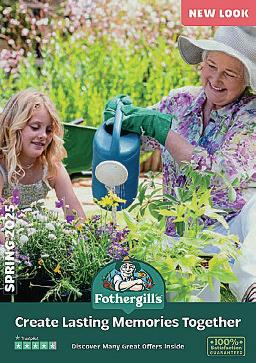
My greenhouse tomatoes and peppers suffered from redspider mites last year.How can Istop this happening again?


TomWestlake, Suffolk
EMMA SAYS: Good hygiene is important withgreenhouse redspider mite(RSM) and this means cleaning the structureand any staging etc well with agood garden disinfectant at the startofthe season to kill any hibernating mites. However, it is abit late for this now,sothe key will be to be vigilant and to check the leaves of your plants several times aweek (minimum), turning over the leaves to see if you can spot
We would like to grow avocados outdoors. Any advice?
Brian Diver,Tyne and Wear


any mites. They aretiny,soyou may need a magnifying glass to see them. Other signs areayellowing or peppering of the leaves, especially on the ends of the leaves and leaf margins at first. Later you may see veryfine webbing. However,itisessential to catch it beforeany webbing becomes evident or it may be too late for effective control.
As soon as youspot even one spider mite treat your crop with abiological control such as phytosieulus or amblyseius –both predatorymites of RSM. These arevery effective but do need to be introduced early beforethe pest population buildstoo much or they willnot be abletokeep numbers in check.
for 30 minutes in hot water 4052C (104-125F) prior to sowing
In bothcases the seed will requireaminimum temperature of 20C (68F), but 25C (77F) is better,and it may take up to eight weeks togerminate



CREDIT:iStock/jess311
‘Brazos it’s not easy to find and
at the time of writing was
STEVE SAYS: Unfortunately, it is not generally possible flower and fruit avocados in theUK. Thereare hardier varieties – one called ‘Wilma’ (or ‘Brazos Belle’) – but it’snot easy to findand is still not that hardy.Another, sold by Plants4Presents.co.uk, is ‘Mexicola eZutano’ which they assert is hardy enough to flower and fruit in the UK (£65 for a grafted three-year-old plant) but at the time of writingwas out of stock. It still needs to be grown indoors in the winter.
Youcan start your own offeasily enough using the seed from ashopbought fruit and either germinating it suspended over ajar of water with the rounded end just in the water,or in compost buried vertically,rounded end first and with the pointed end, asliver of coating removed, upwards. The pointed end should be visible just above the surface. The RHS recommend soaking the seed
Youcan grow your planton as ahouseplant in the UK on a sunny windowsill and it can go outside in warmspells on the summer,but it will requirea warm, light room forthe winter and is unlikely to ever reach the size whereitwill flower and fruit since our climate simply isn’t suitable.
Nonetheless it can bean interesting experiment

TONY SAYS: with a pH of around is not to the UK.




WHAT’S
Ibought acouple of bare root blueberry bushes last year.They appear to be growing OK. I’ve added some mulch and wonder if thereisanything Ican do to supportthe growth this year, hopefully leading to some berries.
Steve Watkin, Wingate


TONYSAYS:
Blueberries grow naturally in acid soil with apHof ound 4.5-5.5, and so for best crops, unless your soilis naturally acidic, it is usually recommended to grow them in araised bed filled with lime-free compost or,more practical and effective for most, in largepotsfilled with
the same compost. If your soil is notnaturally acidic, and before theybecome too established, Iwould suggest lifting yours and potting to ensurethe best crops. Blueberries thrive in pots if given asunny spot and plenty of water during dry spells and need very little careand attention if grown in this way.
The alternative would be to feed regularly with afeed especially for lime-hating plants (rhododendrons, azaleas, camelias etc). It is possible to acidify the soil using sulphur or mulching with pine needles, but this is unlikely to be very effective, since morecalcium is likely to wash in to theroot zone during heavy rains from the surrounding area.

























